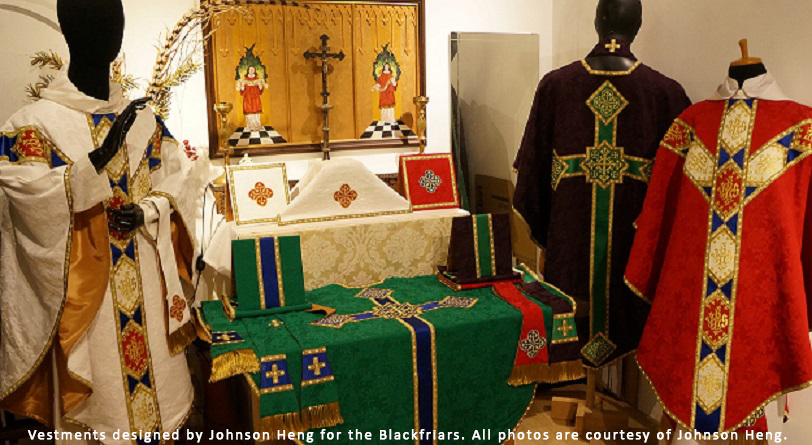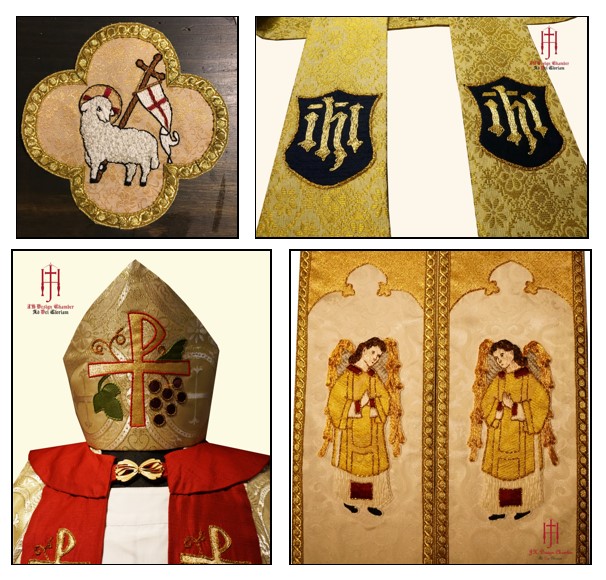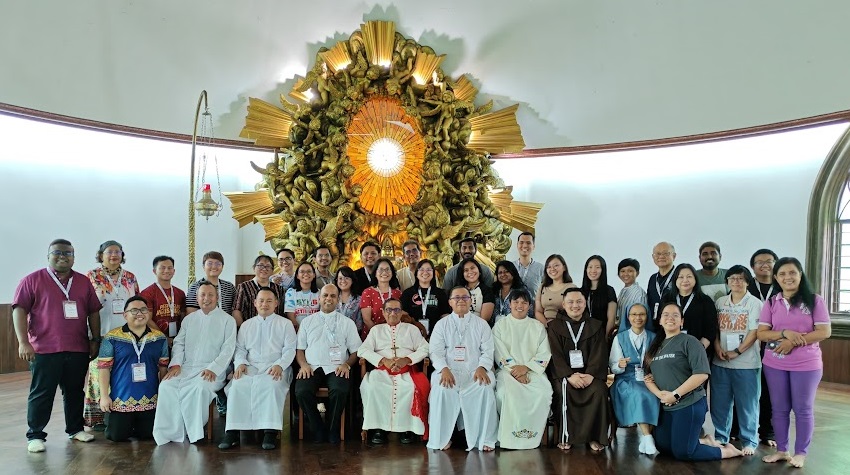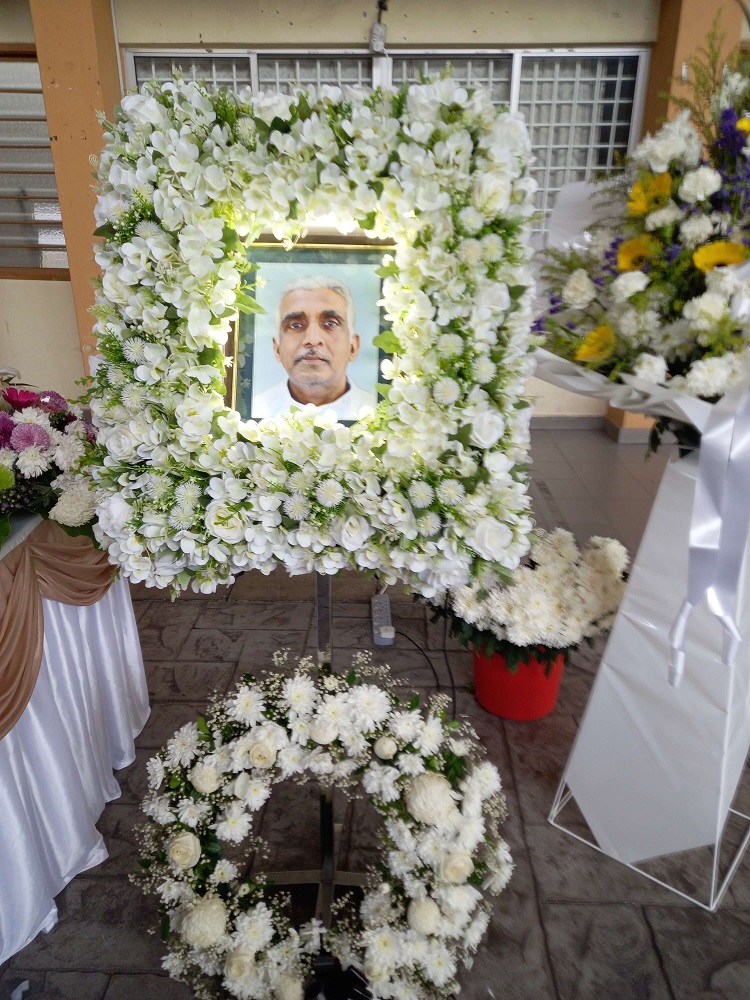KOTA KINABALU: Social communicators from the nine Catholic dioceses in…

Malaysian Anglican makes Catholic vestments for the world
The first time Johnson Heng sewed a vestment was when he was 16 and it was for his Anglican parish priest. Then in 2017, he made his first vestment for a Catholic priest and he has not stopped. Vestment is the ceremonial and official clothing worn by priests. (See graphic below for details)

“I was approached by a young man to make vestments for a Roman Catholic priest,” 28-year-old Heng told Journey With Us-Asia. By this time, he was an ecclesiastical tailor who is known for his hand embroidery and medieval and Gothic designs, and was producing vestments for different denominations and different parts of the world. Ecclesiastical tailors specialise in sewing religious clerical clothing.
It all started for the Kuala Lumpur-born Heng when he responded to a need. “It was all because the altar at my parish (The Parish of Good Shepherd in Subang Jaya) was without a covering. It was bare. I also made some altar paraments.” The altar frontal is the front cloth with a motif or emblem that faces the congregation, while paraments are the cloth placed on the altar, pulpit and parts of the church and they have sewn or embroidered decoration or motifs on them and may not be as elaborate as the ones on the altar frontal.
And it was all self-taught. “I learnt how to sew by mending old vestments. They were falling apart and I decided to try and restore them.” After that proved to be a success, he progressed to vestments. He made them for his parish and that too proved to be a success and then he started getting orders from other parishes and outside the Anglican circle.
“I first started to make vestments for Anglicans. Slowly I gained the attention of different Catholic groups and communities.” Orders also started coming from overseas. His first overseas order came a few years ago from the Community of St Martin, a Catholic monastery in France.
“The order came through my Facebook page,” he said. “Most of my Catholic clients are from overseas. Mainly from Europe, UK and Australia. Occasionally, I get orders from local churches.”
By this time Heng had graduated from a college in Kuala Lumpur where he studied Interior Design. “Currently I’m a practising interior designer but ecclesiastical tailoring is my main focus. As an interior designer, I can attend to one person or one family at a time, but as an ecclesiastical tailor, I serve God and the people of God, hence the motto Ad Majorem Dei Gloriam (For the greater glory of God).”
Each set of vestment for a Catholic priest or deacon takes between a week to a month to make depending on the workmanship that is required. “About 90% of the materials used to make the vestments are imported from different parts of Asia and Europe,” said Heng.
“For Catholic vestments, the peak season is usually around Christmas, Easter and Ember days. This is the time where the priests and deacons are ordained.” Ember days are the days the Catholic Church sets aside, which is every quarter, to thank God for the blessings of nature.
When asked how many vestments he has made so far, Heng said: “I can barely count how many vestments had I made, as the business was officially registered and started in 2008.” His company is Jiang Huai Designs, under which come his interior design work and ecclesiastical tailoring. He makes every one of the vestments and other apparels by himself. His collections can be viewed at his website JH Design Chamber.
There are generally five articles of clothing in a vestment worn by a Catholic priest and they are: amice, alb, cincture, stole, and chasuble (details in graphic below). The priest says a short prayer as he puts on each article. The colour of chasuble, which is the top layer that looks like a cape and hangs over the shoulders covering the body, always follows the liturgical cycle.
The motifs and ornaments on the chasuble, however, follows the priest’s religious order and his personal preference. The material can be patterned or plain and the embroidery can be all over or confined to the front centre.
“In terms of design, I am more inclined to historical design, most of my designs are inspired by either the medieval or Gothic era. Clients also request for something special or ask to have a design customised.”

His work has been described by the Catholic publication Liturgical Arts Journal as “very Pugin-like flavour, employing the classic orphreys or the Latin cross which featured in much early Gothic revival work”. Orphreys are the ornamental stripe or borders and Augustus Welby Northmore Pugin is an architect and designer who is known for his pioneering work in the Gothic Revival style of architecture.
“Rubrics are the directions or guides for the liturgical practices where vestment is part of the subject. We have two main branches, the Eastern and the Western church. And here in Malaysia, most of my clients ask for vestments that follow the Western rites. This includes the Roman Catholics, Anglicans and Lutherans. They have their own rubrics they need to adhere to. Each rite has its own rubrics.”
“Not many ecclesiastical tailors can make hand embroidery and it is even rarer for someone to specialise in the medieval and Gothic style.” Heng also has one other specialty. He has vestments made from locally-sourced songket fabric. Songket belongs to the brocade family and it comes from the Malay community.
“At the moment, we do not have any full-time ecclesiastical tailors in Malaysia. There used to be the sisters, I believe the Daughters of St Paul, who did this. But since the 90s they are no longer making vestments. There are some sisters in Singapore who served the Southeast Asian market for a while. Southeast Asia does not really have a history in vestment making. There are some amateur tailors here who make vestments using silk and hand embroidery and some of them are remarkable gems.”
But why do Catholic priests wear those fancy robes? “They are meant to obliterate the priest’s personality,” according to Fr Dwight Longenecker in the National Catholic Register. It is to remind people that the priest serves Christ the King and that he is in persona Christi (in the person of Christ). “When the priest dresses in fine robes, he symbolises the riches of grace bestowed upon the people of God … the white alb (is) the symbol that he and his people are clothed in the righteousness of Christ by virtue of their baptism … a splendid chasuble (is) to show that the final state of the Christian is not just the white robes of Christ’s righteousness but a share in Christ’s own royal priesthood.”
SOURCE: Journeywithus.asia




This Post Has 0 Comments